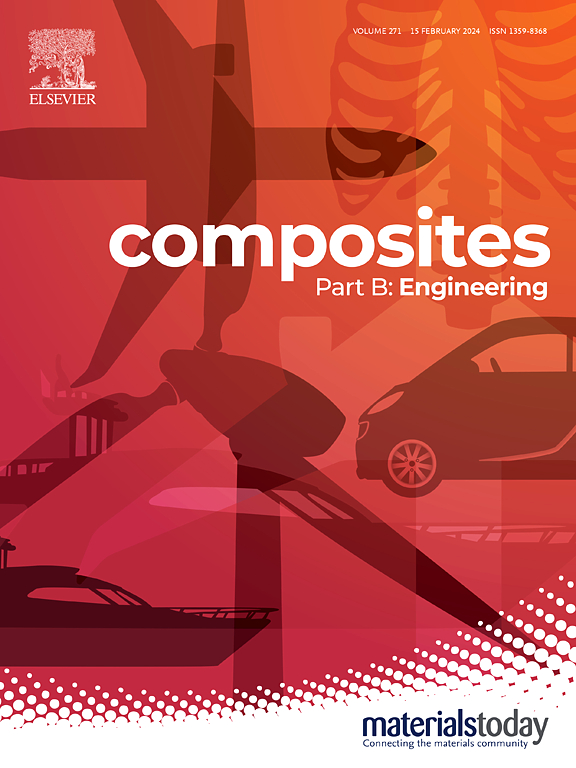In-situ fatigue prognosis in laminated composites: A machine learning approach using self-temperature rise data
IF 12.7
1区 材料科学
Q1 ENGINEERING, MULTIDISCIPLINARY
引用次数: 0
Abstract
This study presents a new methodology for fatigue prognosis in laminated composites at early stages of loading using in-situ thermal data. To this end, a Non-Dominated Sorting Genetic Algorithm II was coupled with an Artificial Neural Network model to optimize the model's hyperparameters. The model was then trained on carbon/epoxy laminate data, considering various stress concentration factors, loading levels, and stacking sequences, with a focus on self-temperature rise data as key input features. To enhance the training dataset, two different data augmentation methods were employed. Also, the performance of the developed model was compared to conventional regression-based machine learning algorithms, including Decision Tree and Gradient Boosting. Results showed that the model predicted the applied force on the composites with a mean absolute percentage error of 1.34 and achieved an R2 score of 0.91 for fatigue life prediction on validation datasets.
求助全文
约1分钟内获得全文
求助全文
来源期刊

Composites Part B: Engineering
工程技术-材料科学:复合
CiteScore
24.40
自引率
11.50%
发文量
784
审稿时长
21 days
期刊介绍:
Composites Part B: Engineering is a journal that publishes impactful research of high quality on composite materials. This research is supported by fundamental mechanics and materials science and engineering approaches. The targeted research can cover a wide range of length scales, ranging from nano to micro and meso, and even to the full product and structure level. The journal specifically focuses on engineering applications that involve high performance composites. These applications can range from low volume and high cost to high volume and low cost composite development.
The main goal of the journal is to provide a platform for the prompt publication of original and high quality research. The emphasis is on design, development, modeling, validation, and manufacturing of engineering details and concepts. The journal welcomes both basic research papers and proposals for review articles. Authors are encouraged to address challenges across various application areas. These areas include, but are not limited to, aerospace, automotive, and other surface transportation. The journal also covers energy-related applications, with a focus on renewable energy. Other application areas include infrastructure, off-shore and maritime projects, health care technology, and recreational products.
 求助内容:
求助内容: 应助结果提醒方式:
应助结果提醒方式:


